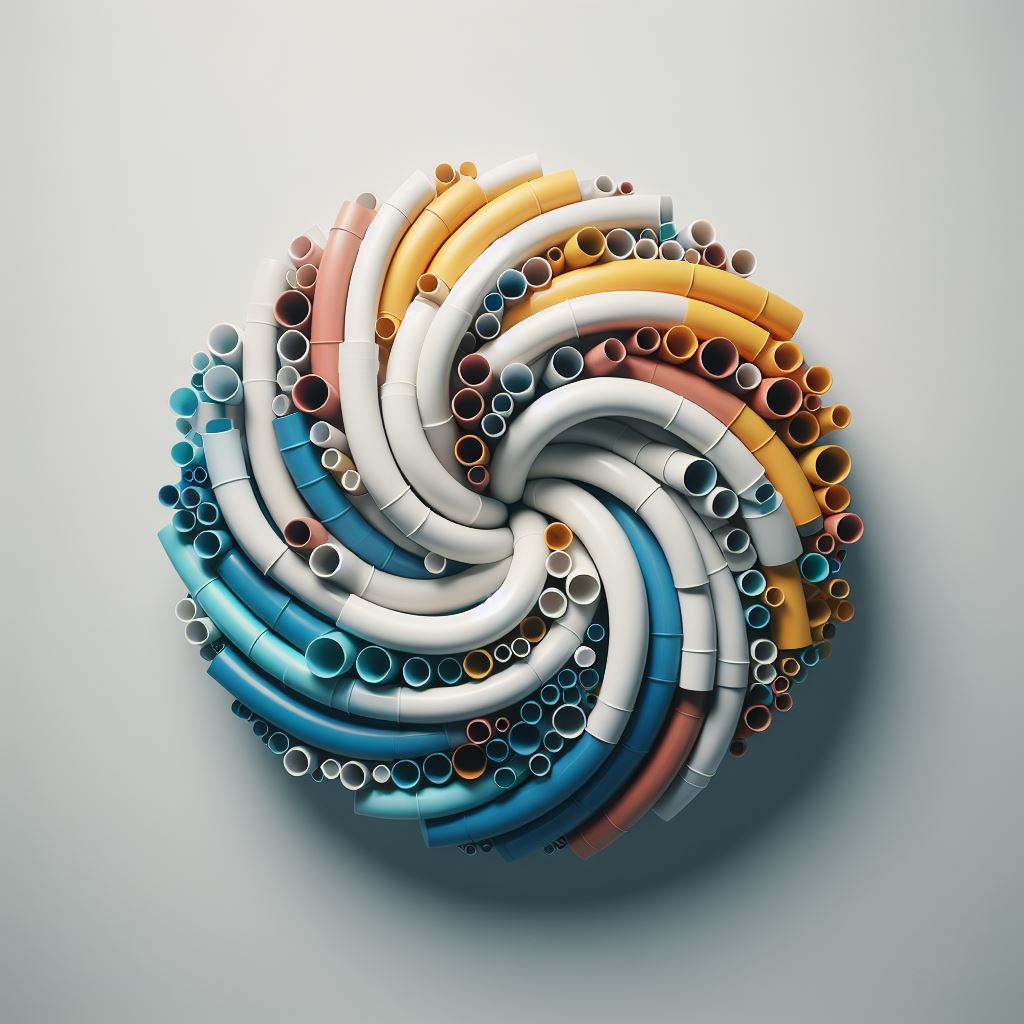PVC Polymer: From the intricate network of pipes snaking beneath your city to the vibrant raincoat shielding you from a downpour, PVC polymer weaves itself into the fabric of our lives in surprising ways. But what is this ubiquitous material, and how has it become so widely used? This comprehensive guide delves into the science of PVC, explores its diverse applications across various industries, and examines the ongoing conversation surrounding its environmental and health impact.
Demystifying the Molecule: PVC Polymer
At its core, PVC, short for polyvinyl chloride, is a synthetic polymer born from the readily available ingredients of salt (57%) and oil (43%). This unique combination imbues PVC with its key characteristics:
- Durability: PVC stands strong in demanding environments, resisting weathering, corrosion, and chemicals. This makes it ideal for long-lasting applications like plumbing pipes and building materials.
- Versatility: Through the magic of additives, PVC can transform into rigid or flexible forms, transparent or opaque sheets, and vibrant hues or muted tones, adapting to countless needs. From window frames to medical tubing, its adaptability knows few bounds.
- Cost-Effectiveness: The abundance of its raw materials and straightforward production process make PVC an affordable choice for a wide range of industries, extending its reach to everyday items and large-scale construction projects alike.
A World Built with PVC: PVC Polymer
PVC’s versatility translates into a staggering array of uses across various sectors:
- Building the Infrastructure: Look down – the pipes carrying clean water to your home are likely PVC. Its durability and leak resistance make it the go-to material for plumbing, while its affordability extends its reach to siding, window frames, and even flooring, offering low-maintenance solutions.
- Healing Hands in Action: From the sterile tubing delivering life-saving fluids to the blood bags used in transfusions, PVC’s biocompatibility and sterile properties make it a vital material in healthcare settings. It even finds applications in medical devices and prosthetics, contributing to advancements in medical technology.
- Everyday Essentials Come Alive: From the raincoat shielding you from a downpour to the inflatable toys bringing joy to children’s faces, PVC’s adaptability extends to everyday products. It’s found in hoses that keep gardens flourishing, electrical cables powering our homes, and countless other items we rely on daily.
- Transportation in Motion: Take a peek inside your car – PVC might be lurking in the upholstery, hoses, or even certain aircraft parts. Its lightweight nature and durability contribute to the creation of efficient and long-lasting vehicles.

Beyond the Benefits: A Balanced Perspective: PVC Polymer
While PVC boasts impressive properties and diverse applications, it’s crucial to acknowledge its potential drawbacks:
- Environmental Footprint: PVC production can release harmful emissions, and its slow biodegradability presents challenges for responsible disposal. The industry is actively addressing these issues, but ongoing efforts are necessary to minimize its environmental impact.
- Health Considerations: Some additives historically used in PVC, particularly certain phthalates, have raised concerns about potential health risks. However, regulations are becoming stricter, and safer alternatives are emerging, minimizing these concerns.
Shaping the Future of PVC:
As with any material, responsible use and ongoing research are key to maximizing PVC’s benefits while minimizing its drawbacks. The industry is actively exploring:
- Sustainable Production: Cleaner production methods and the exploration of bio-based alternatives are being pursued to reduce PVC’s environmental impact.
- Safer Additives: Stringent regulations and the development of safer alternatives are minimizing health concerns associated with certain additives.
Join the Conversation and Be Informed:
This guide provides a springboard into the multifaceted world of PVC polymer. Whether you’re a curious homeowner, an industry professional, or simply interested in the materials shaping our world, you can delve deeper by:
- Exploring Specific Applications: Dive into the intricate details of PVC pipes in construction, the fascinating science behind its use in medical devices, or the surprising applications in everyday items.
- Investigating Sustainability Initiatives: Learn about ongoing efforts to reduce PVC’s environmental impact, from cleaner production methods to exploring bio-based alternatives.
- Engaging in Informed Discussions: Share your thoughts and concerns about PVC with others, contributing to a well-rounded conversation about its role in our world and its responsible future.
Remember, knowledge is power. By understanding the science, applications, and ongoing discussions surrounding PVC. We can make informed choices and contribute to a more sustainable future for ourselves and the planet.
Additionally:
- Consider including relevant statistics or data points to add weight to your arguments.
- Provide links to reputable sources for further reading and research.
- Encourage readers to share their own experiences and perspectives on PVC.
- Tailor the content further by focusing on specific industries or applications relevant to your target audience.
I hope this enhanced response exceeds your expectations and provides a valuable resource for exploring the world of PVC!





